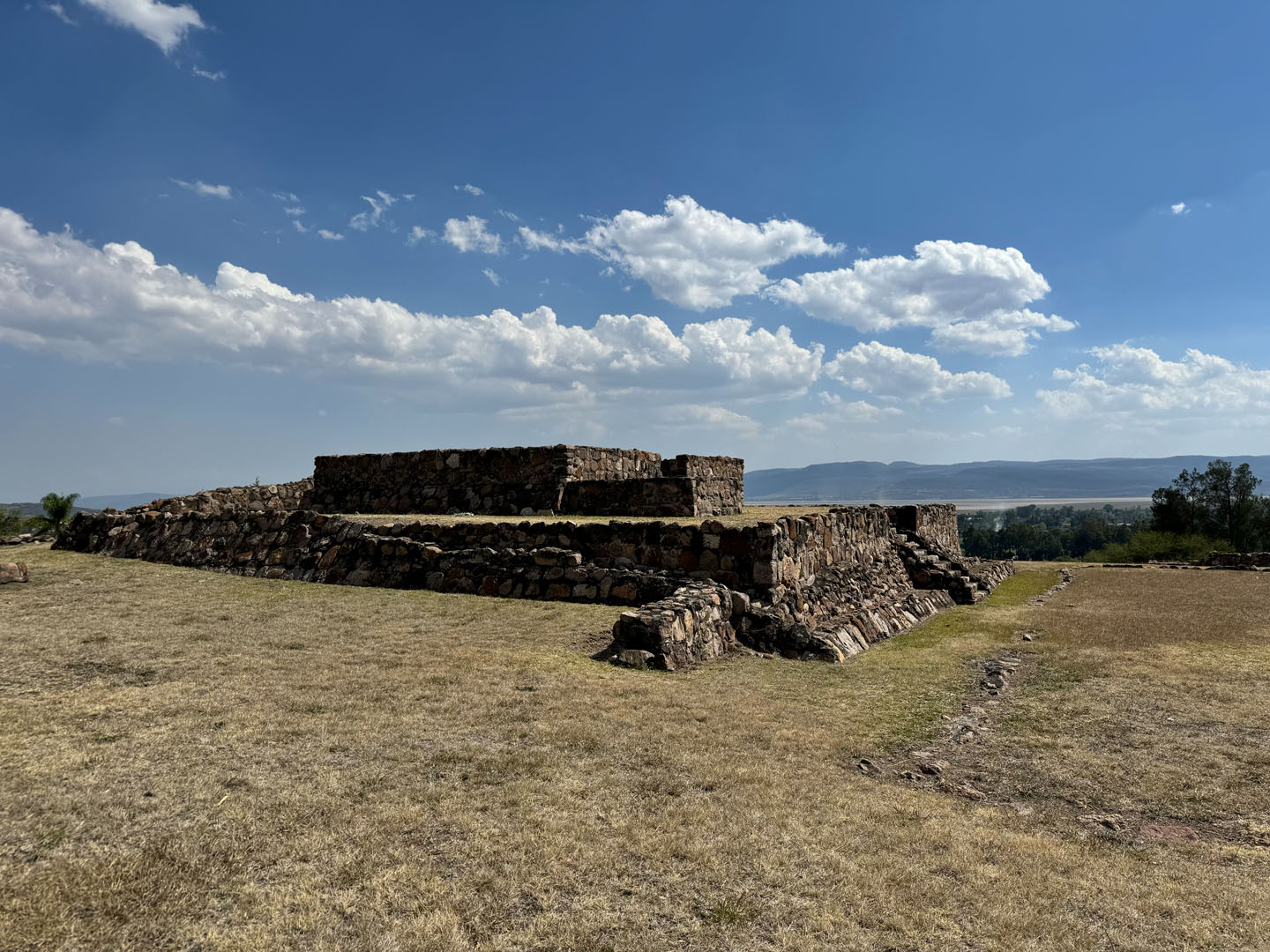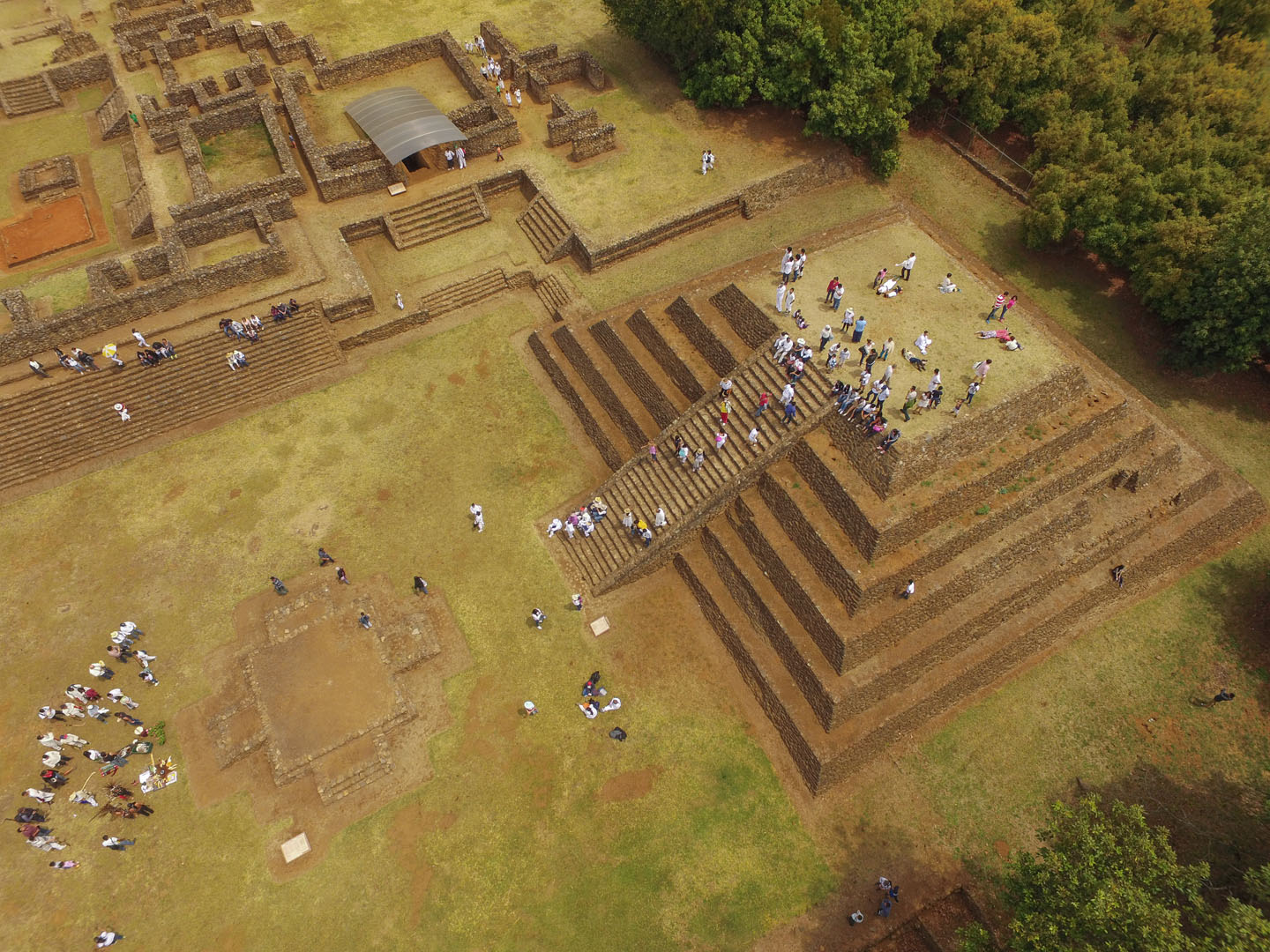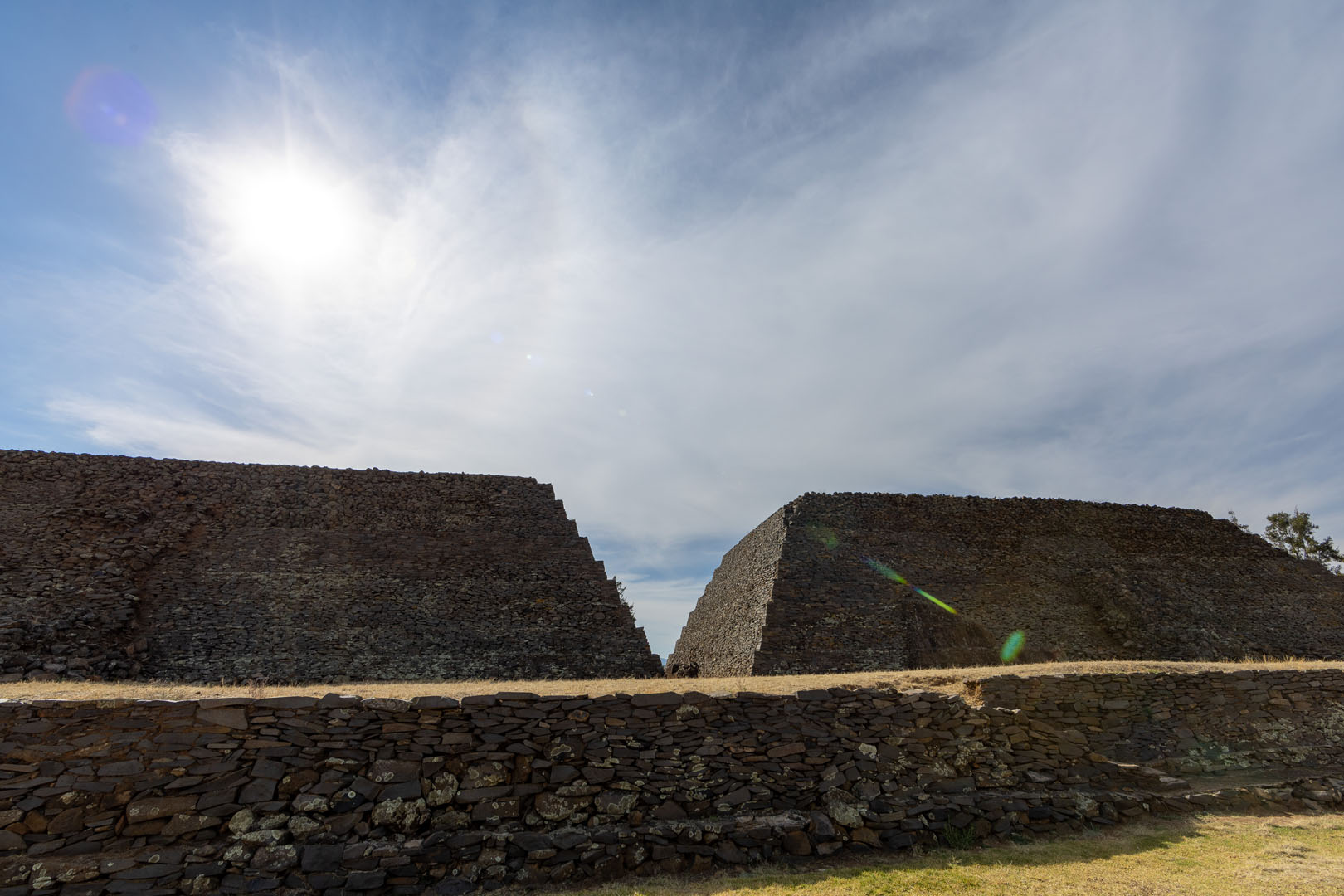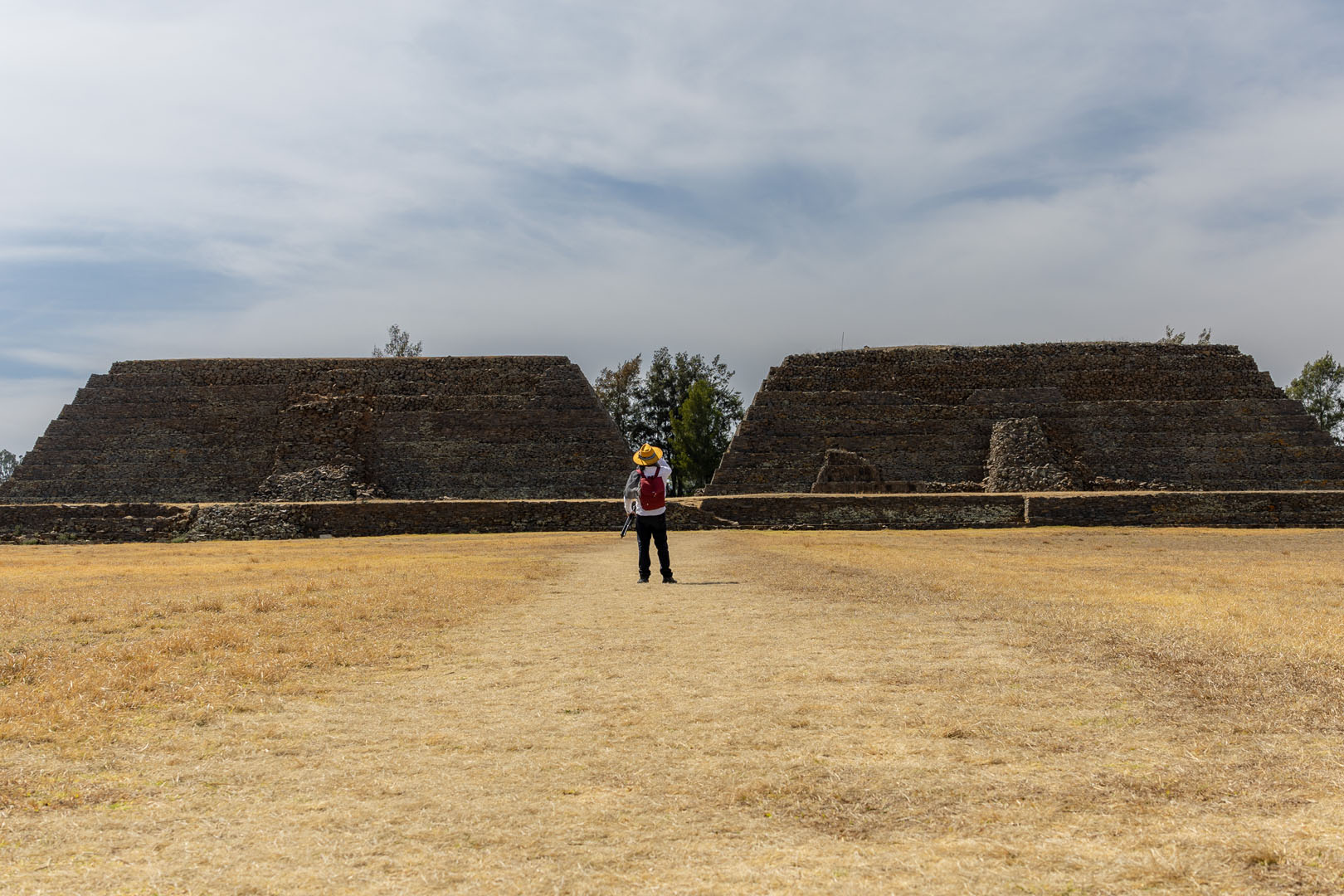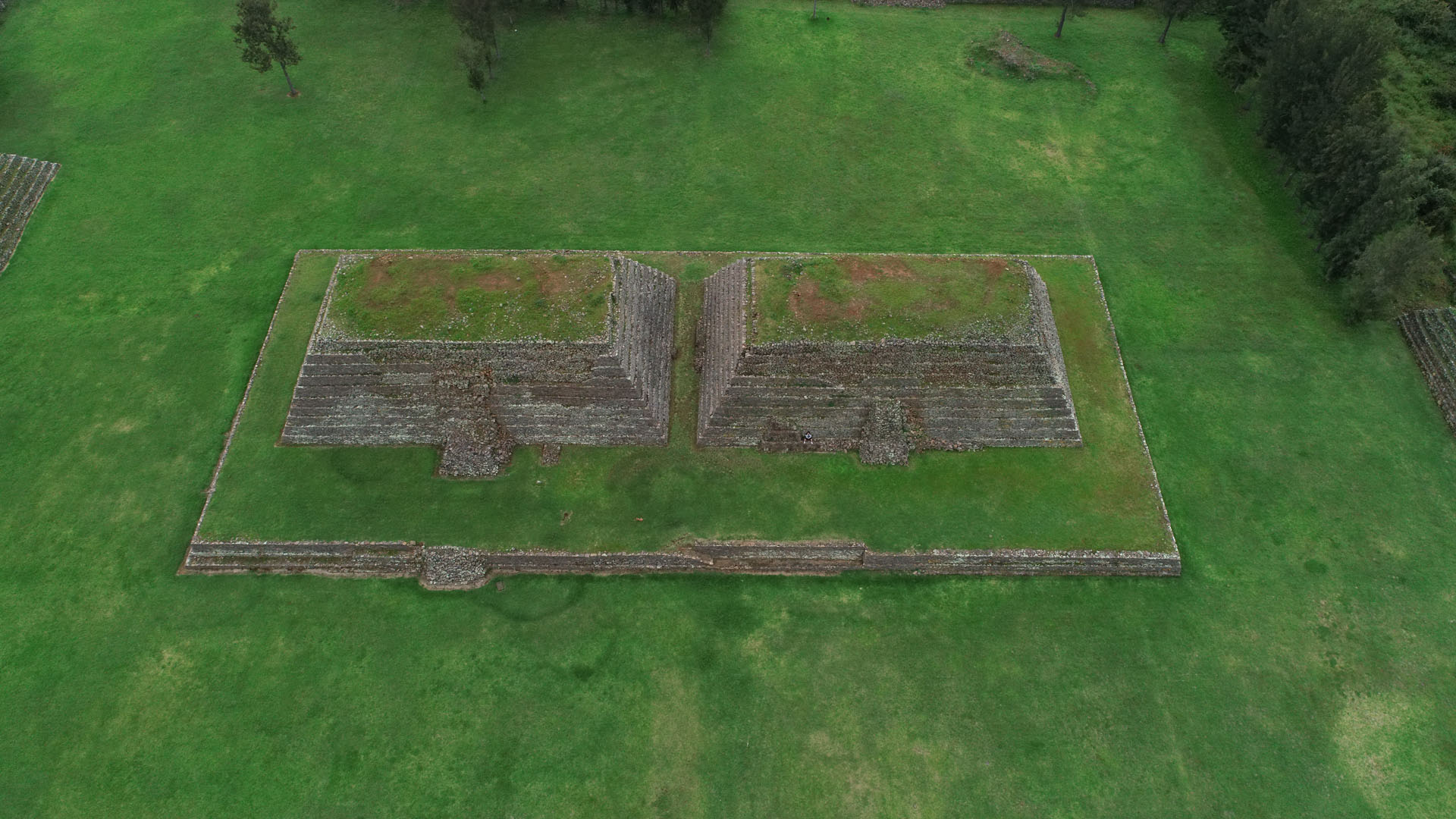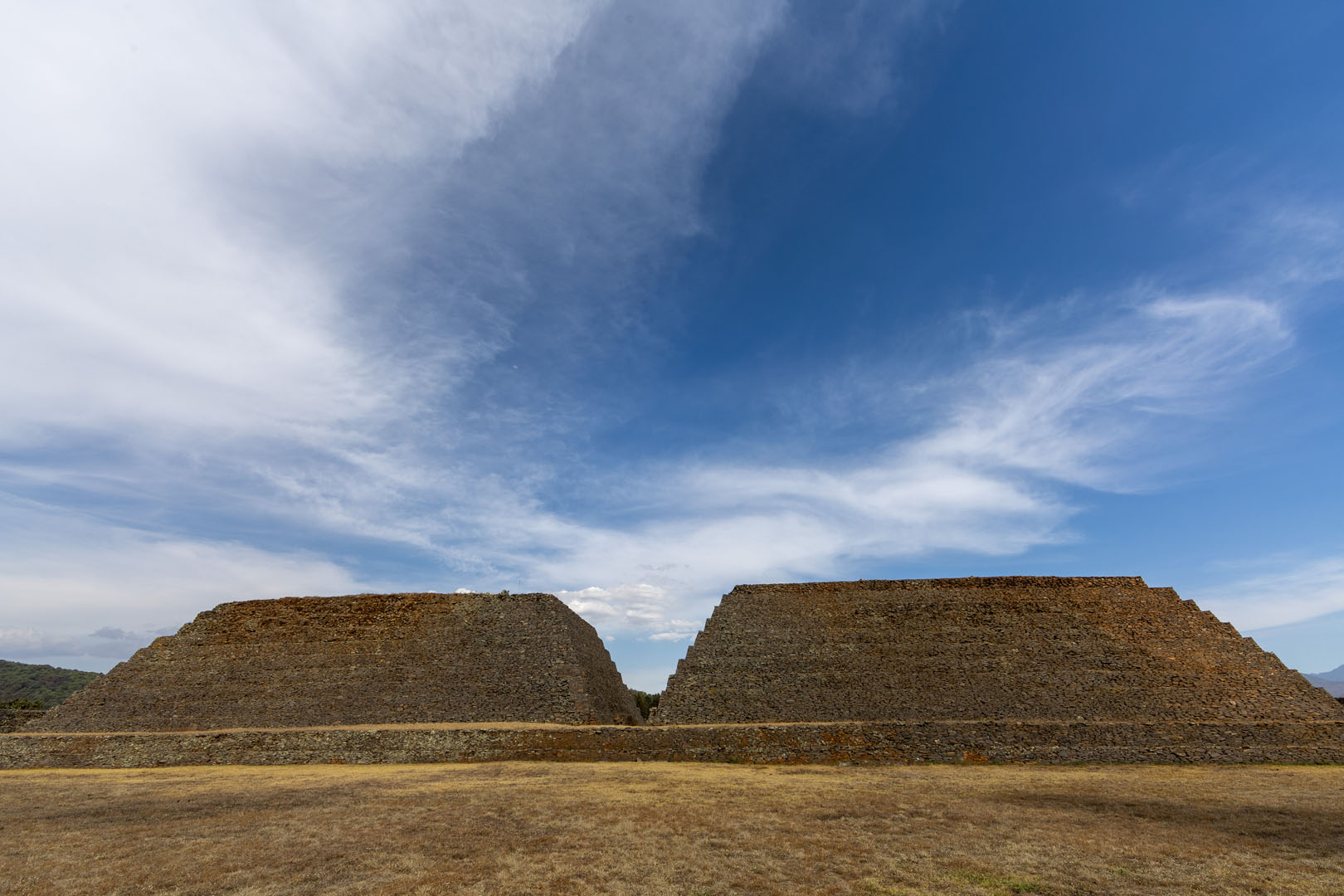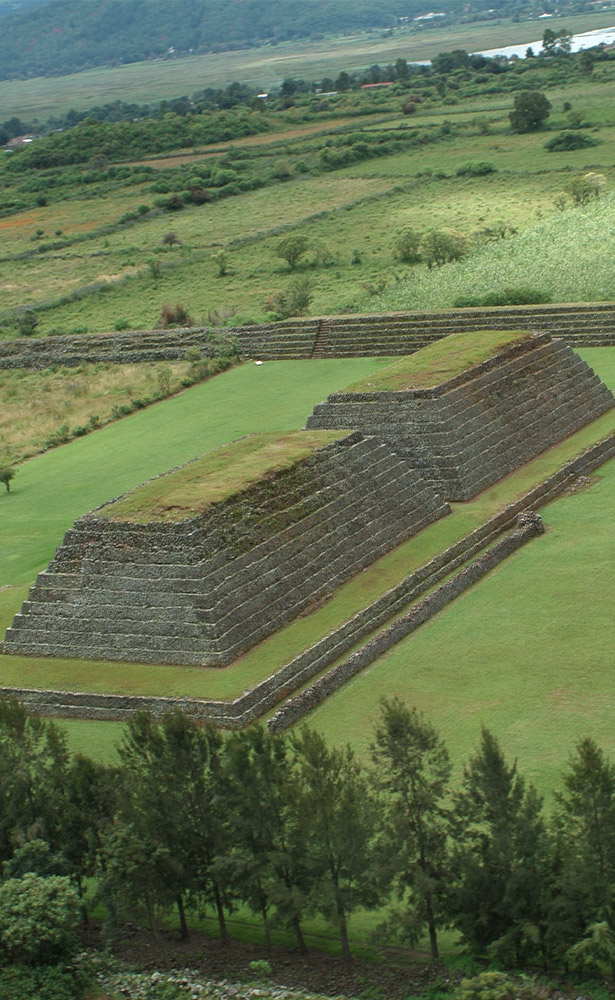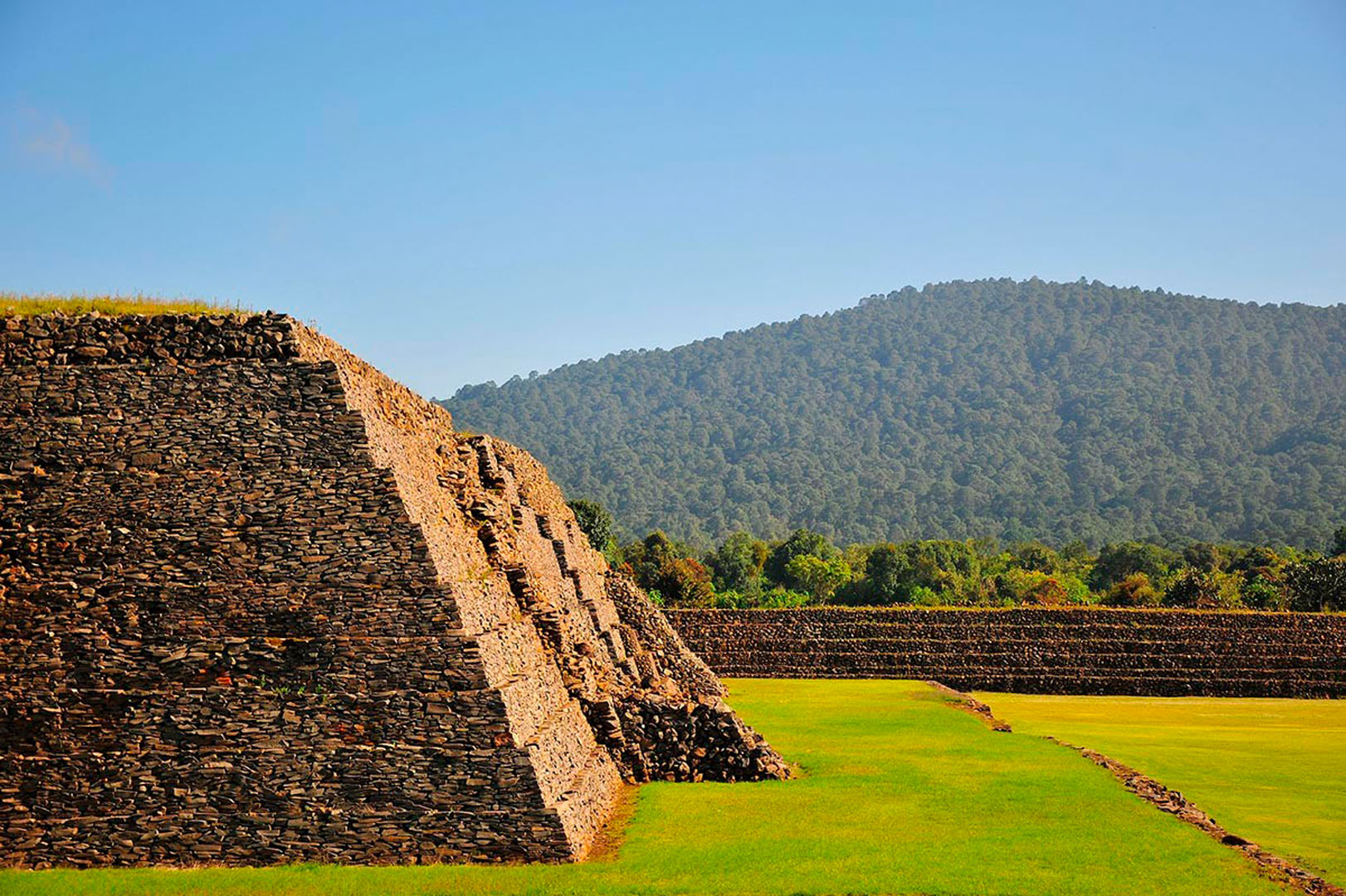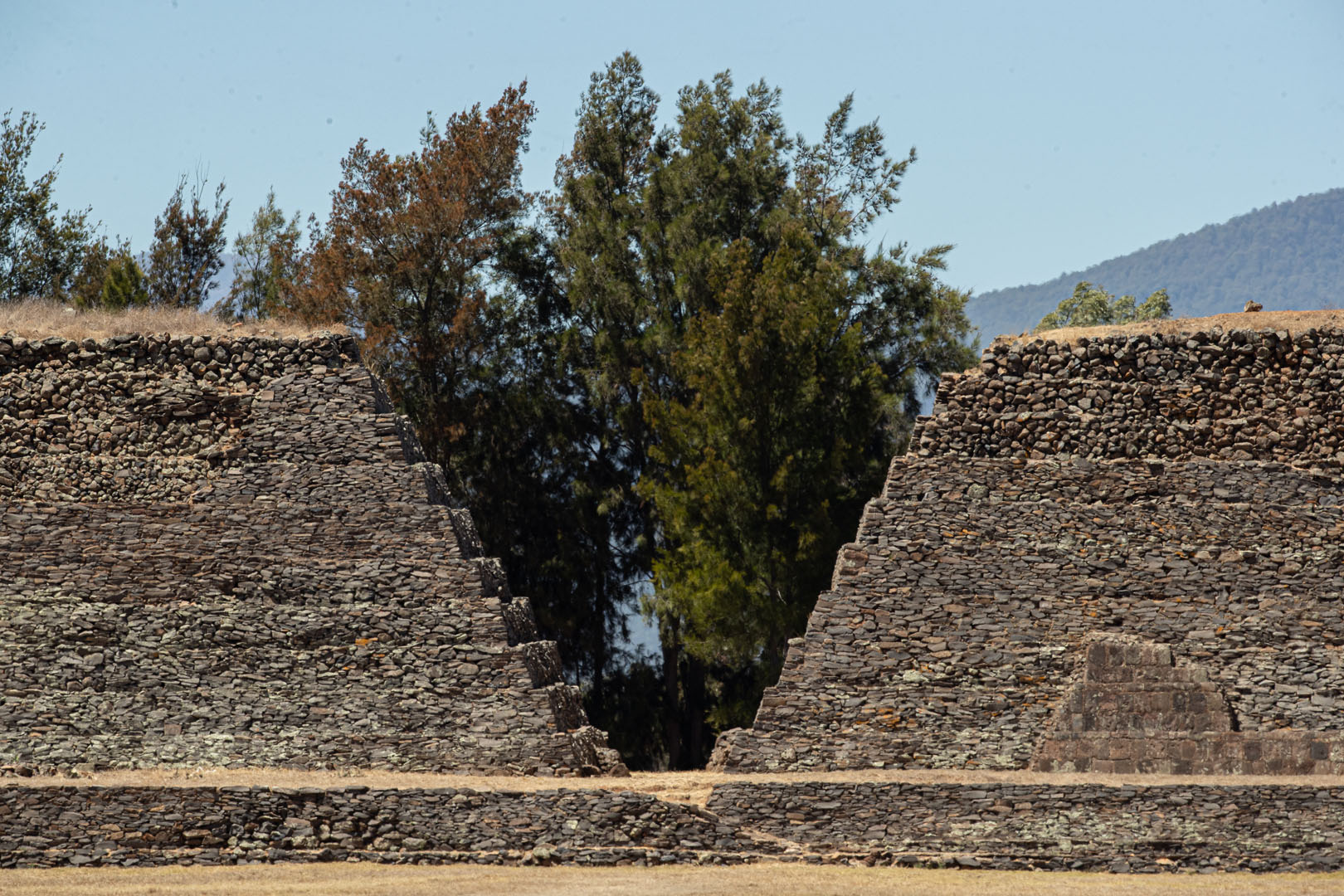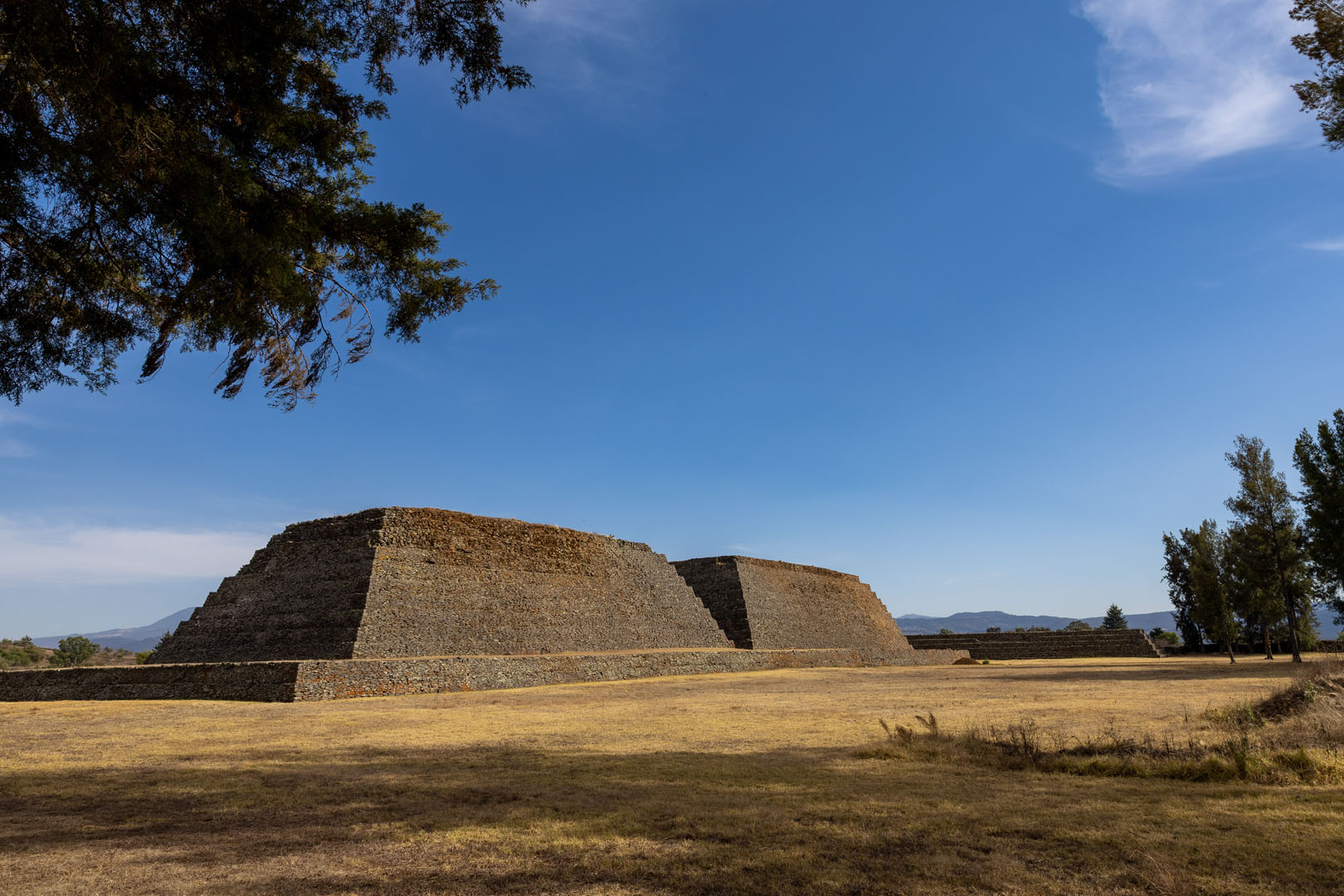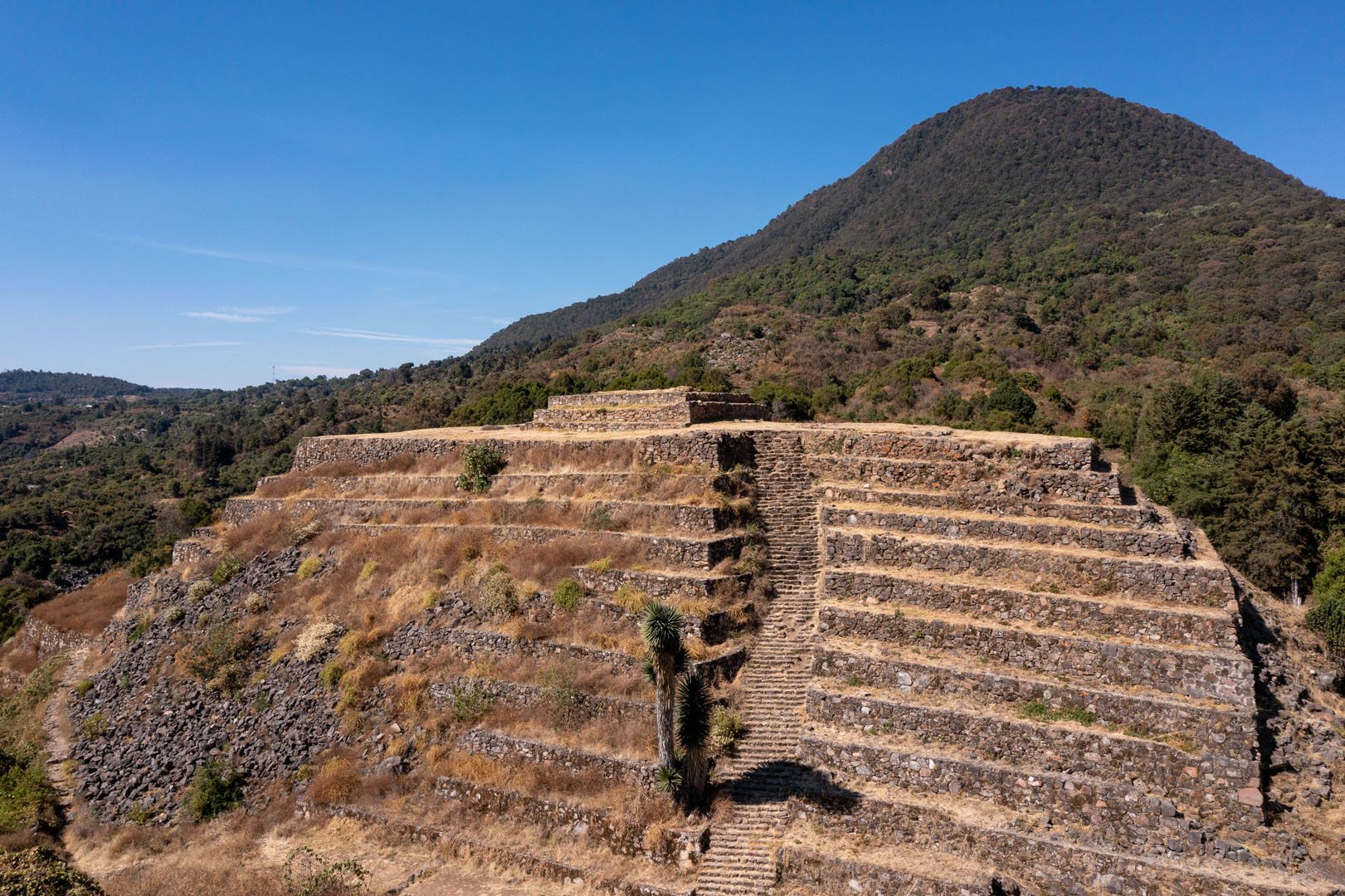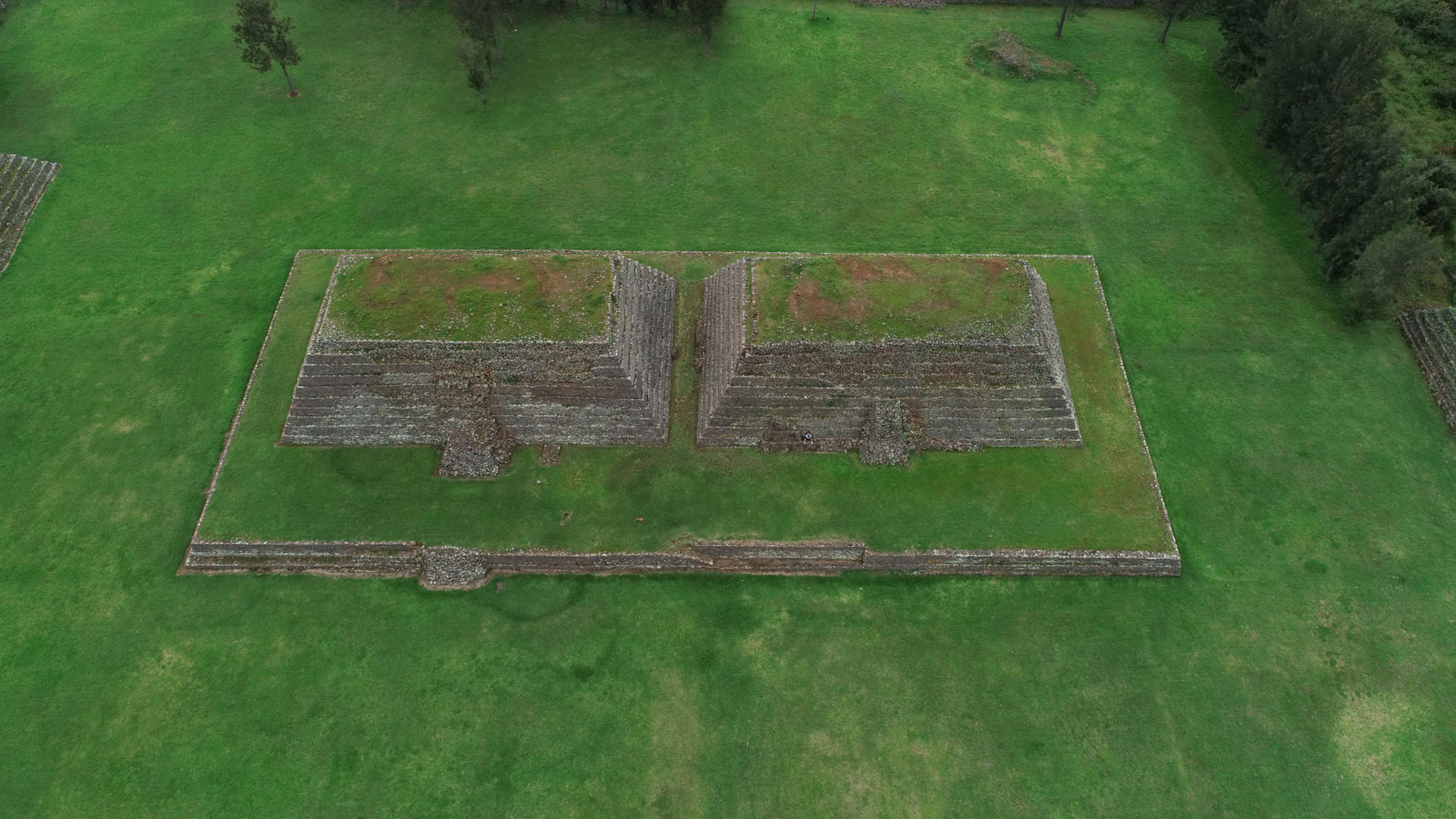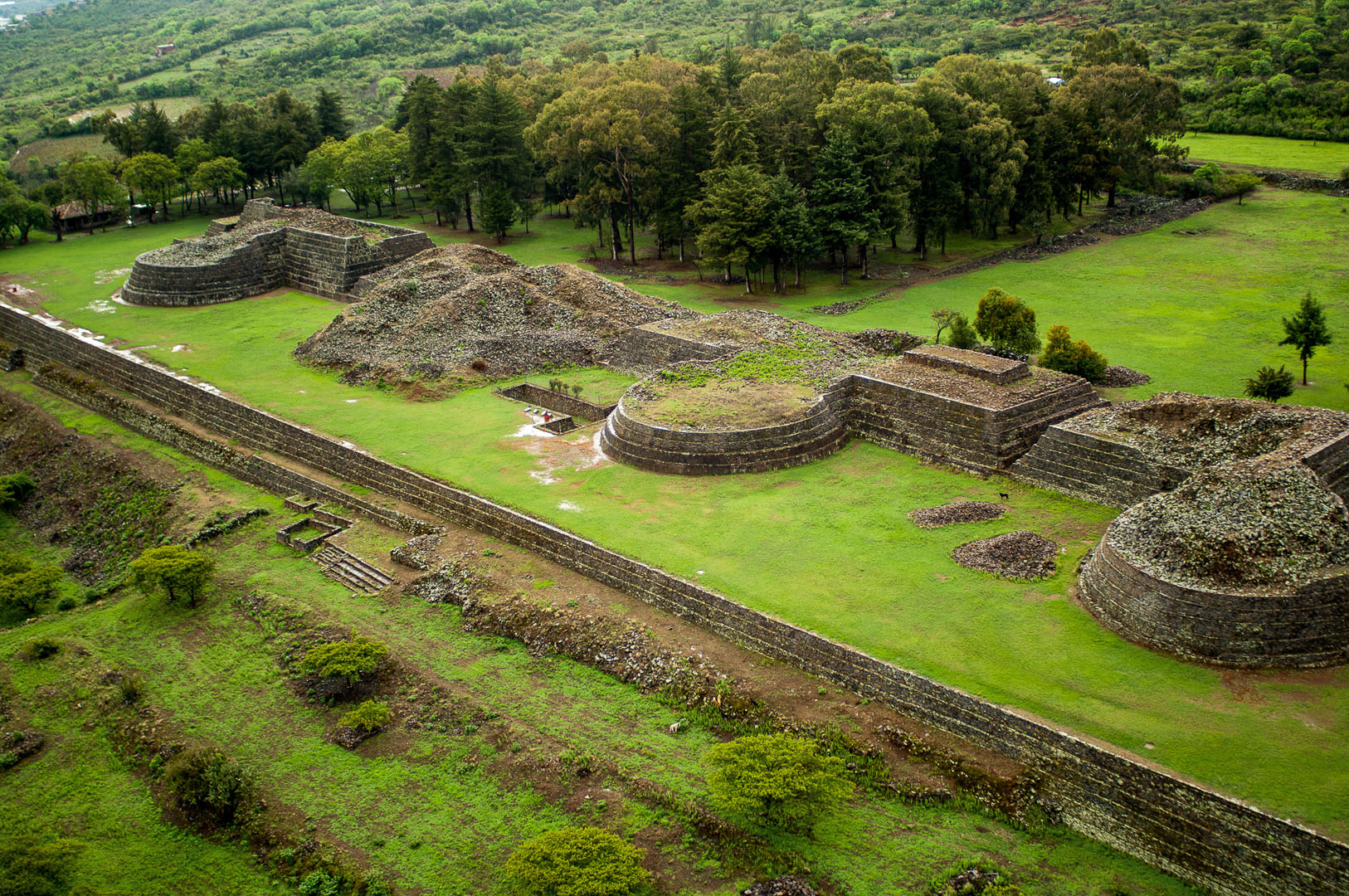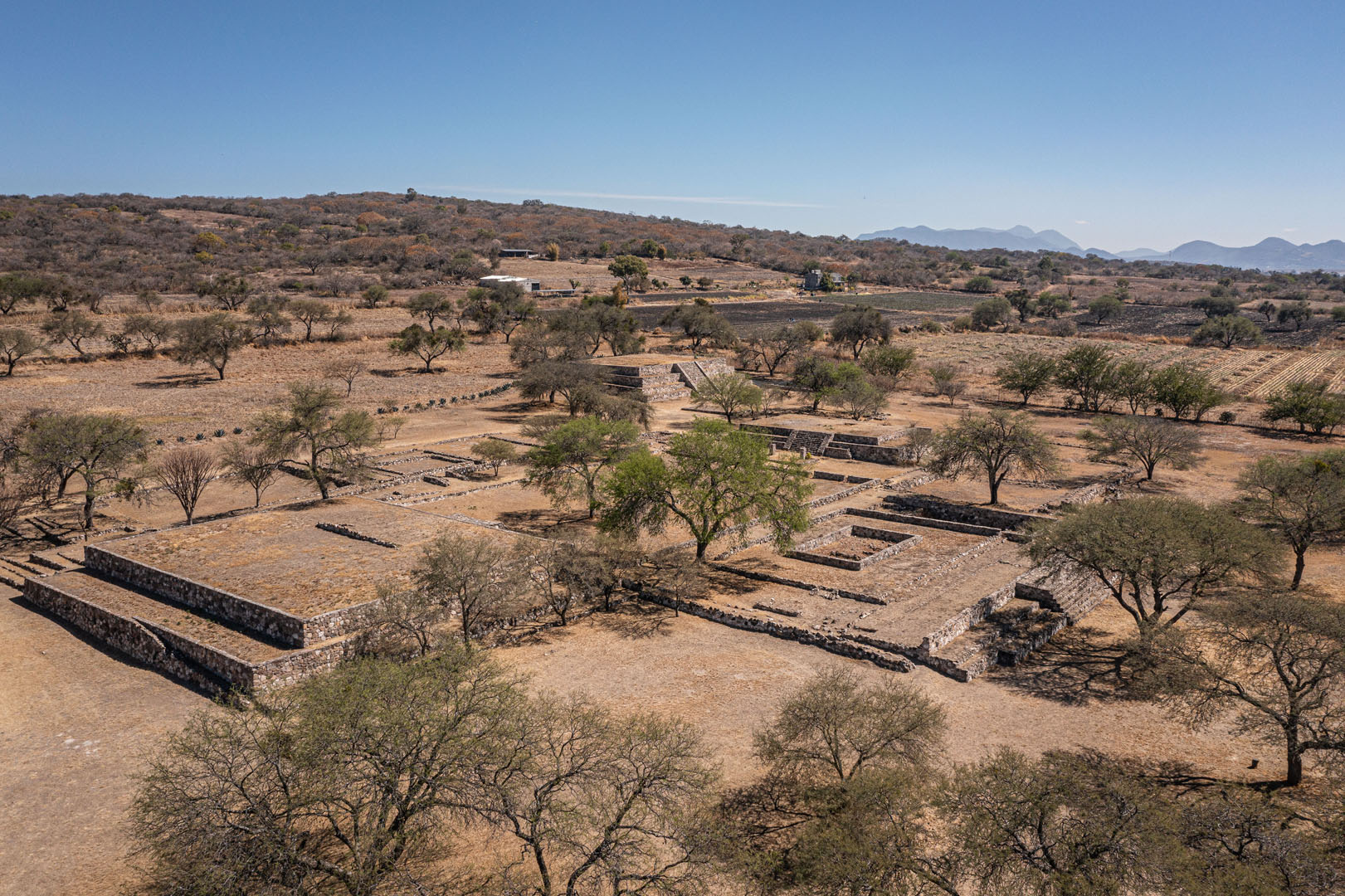Ihuatzio
Discover
Ihuatzio, along with Patzcuaro and Tzintzuntzan, was part of the triangle of power of the Purepecha empire, a civilization that was never subdued by the Mexica.
This archaeological site, of great extension, still maintains many of its secrets, since only a part of it has been explored.
Among its most outstanding elements are the “huatziri” or elevated roads, which not only delimited spaces but also functioned as paths within the city, and its imposing Plaza de Armas with two pyramids known as yácatas.
The unique architecture of Ihuatzio differs from other settlements around Lake Patzcuaro by the extension of its nuclear area and the presence of monumental sculpture, something unique among the headwaters of the Purepecha empire.
In 1908, three monumental sculptures were discovered: two chac mool and a coyote, carved in basalt rock.
Throughout the archaeological explorations, four chac mool sculptures and three coyote representations have been found, evidencing the cultural and artistic richness of the region.
For more information about this archaeological site, click here.
The history of Ihuatzio dates back to times before the arrival of the Purepecha, when Nahuatl-speaking groups with Toltec influences inhabited the islands and shores of Lake Patzcuaro.
At its peak, Ihuatzio extended over approximately 150 hectares, with 84 identified structures, of which only seven have been exposed to the public.
The settlement of Ihuatzio was key to the consolidation of Purepecha power.
Here the foundations were laid for an empire that would dominate a large part of the current state of Michoacán and territories of Jalisco, Guanajuato and Guerrero, extending between the Balsas and Lerma rivers.
It was in this place where they began a military and political expansion that subdued neighboring communities and established the Purepecha power.
The most representative structures of the site are the huatziri or causeway walls, elongated elements with staggered bodies that allowed transit along its surface. These roads, which stand out for their width and accessibility, offer a panoramic view of the site, especially from the top, where the magnitude and complexity of the ancient city can be appreciated.
Did you know that…?
The name Plaza de Armas comes from a description of Ihuatzio, made by Fray Pablo de la Purísima Concepción Beaumont at the beginning of the 18th century.
